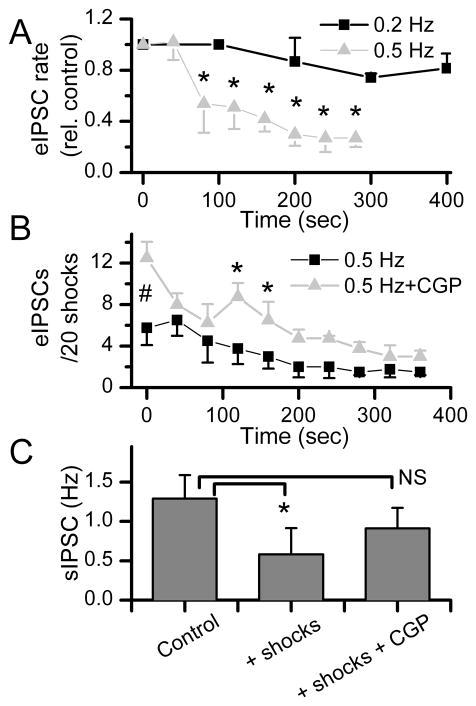Figure 7.
The response rate to repeated shocks triggered substantial, frequency dependent depression of successful eIPSCs from single terminals as well as spontaneous IPSCs out of synchrony with the shocks. A. On average, GABA releasing boutons shocked at 0.2 Hz (n = 4, A) had relative success rates for triggering IPSCs that did not change over many minutes of stimulation (black squares). However, increasing the bouton activation rate of these terminals to 0.5 Hz markedly decreased the eIPSC relative response rate (n = 4). The number of responses initially were 8.5 (n=4) and 5.8 (n=4) at 0.2 and 0.5 Hz, respectively. B. At 0.5 Hz stimulation, the number of eIPSC responses declined in control conditions with repeated trials (200 trials total, n=4 neurons). Application of the GABAB antagonist CGP 52432 (5 μM) substantially increased the initial success rate for eIPSCs at Time 0 (#, p<0.0003). Continued stimulation at 0.5 Hz resulted in a decline in successful eIPSCs (*p<0.04). C. Activation of single GABAergic boutons substantially decreased the frequency of sIPSCs recorded during sustained stimulation (*p<0.05, n=5 neurons). Application of CGP 52432 increased sIPSC rates well above control levels between 200 and 300 sec of stimulation. Thus, despite continued bouton stimulation, CGP eliminated a GABAB mediated suppression of spontaneous GABA release. All points are means±SEM. Differences tested with RM-ANOVA.

